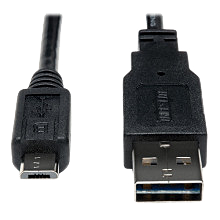When you feel your phone, tablet or laptop is taking an awfully long time to recharge back to 100% capacity, you may be wondering whether it’s time to buy a new battery or even a battery charger. While it’s possible that your battery or charger could be the cause of the slow recharge rate, they aren’t the only things that can impact mobile device battery recharging rates. A seldom talked about possibility is the USB charging cables being used.
USB charging cables are pretty simple, consisting of two connectors and a couple of feet of wire bound within an insulated and shielded covering. But a worn connector that has become loose can insert more electrical resistance into the battery charging circuit, thereby decreasing the charging voltage, and effectively lowering the charging current and slowing down the charging rate. So, make sure your USB charging cable’s connectors are clean and have a secure fit.
Furthermore, older USB charging cables, sometimes called 28/28 cables, can slow down recharge rates because they use two separate pairs of 28 AWG (American Wire Gauge) wires for both data syncing and battery charging. 28 AWG wire is very thin, about 160 circular mils (Note: A circular mil is a circle with a diameter of only one thousandth of an inch). This very thin wire in the charging circuit causes it to have a limited current-carrying capacity. 28/28 cables are fine for syncing data, which requires very little current, but for charging a battery, especially a discharged battery, 28/28 cables can’t handle the higher charging current needed for a fast recharge of today’s super-sized mobile device batteries.

Newer USB charging cables, called 28/24 cables, employ 28 AWG wire for their data lines and 24 AWG wires for their charging lines. 24 AWG wire has a cross sectional area of 404 circular mils—about 2.5 times larger than 28 AWG wire, giving it a much greater capacity to carry the 2-amp charging current that today’s USB battery chargers can generate.
How do you find out if you have a 28/28 or 28/24 USB charging cable? Look for the identifying markings on the cable itself. Replacing old USB charging cables with new ones is inexpensive and can often lead to faster mobile device recharging, which is well worth the cost.
28/24 AWG USB charging cables can also be used with charging stations to charge and sync multiple tablets, such as iPads, Androids and Chromebooks.





